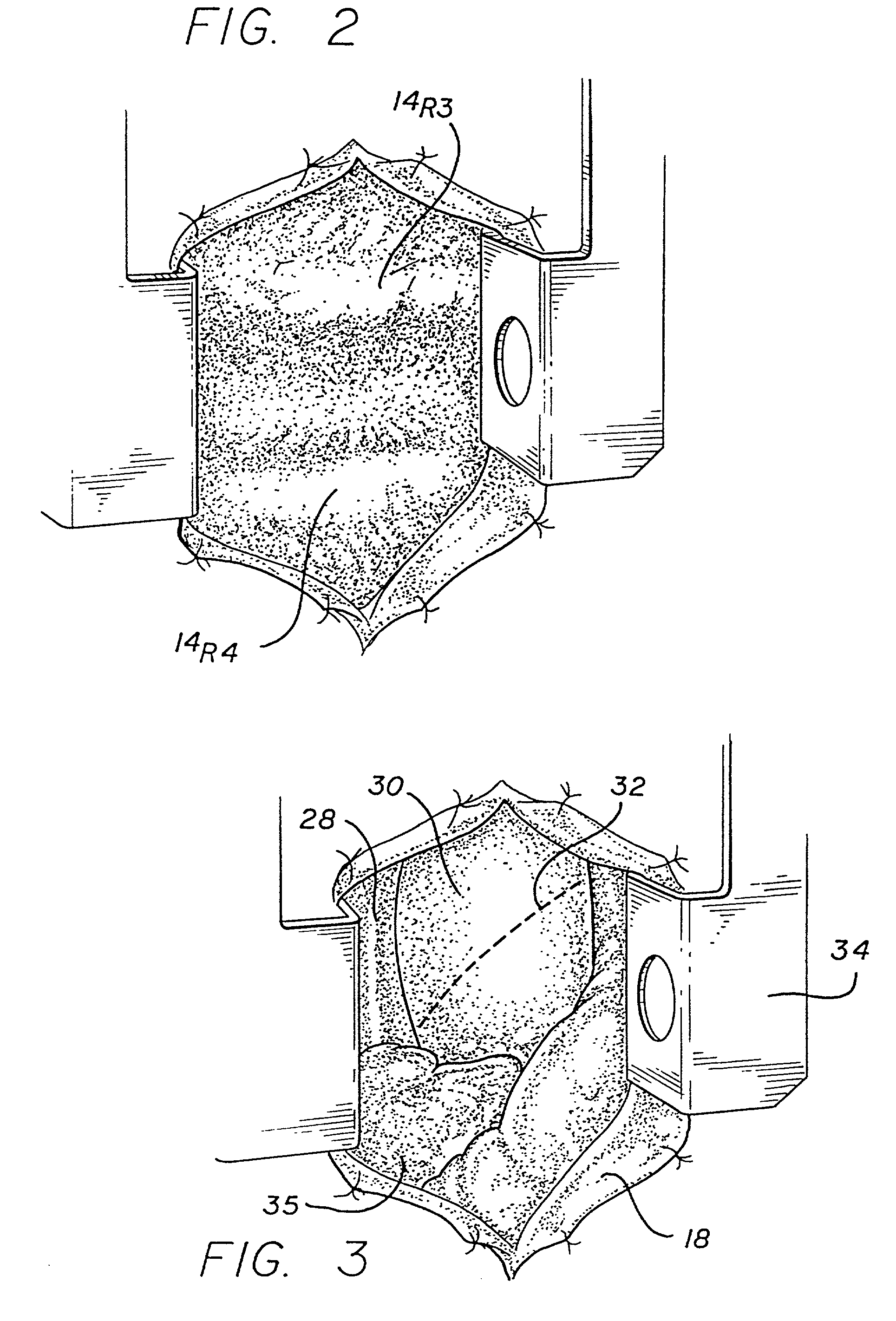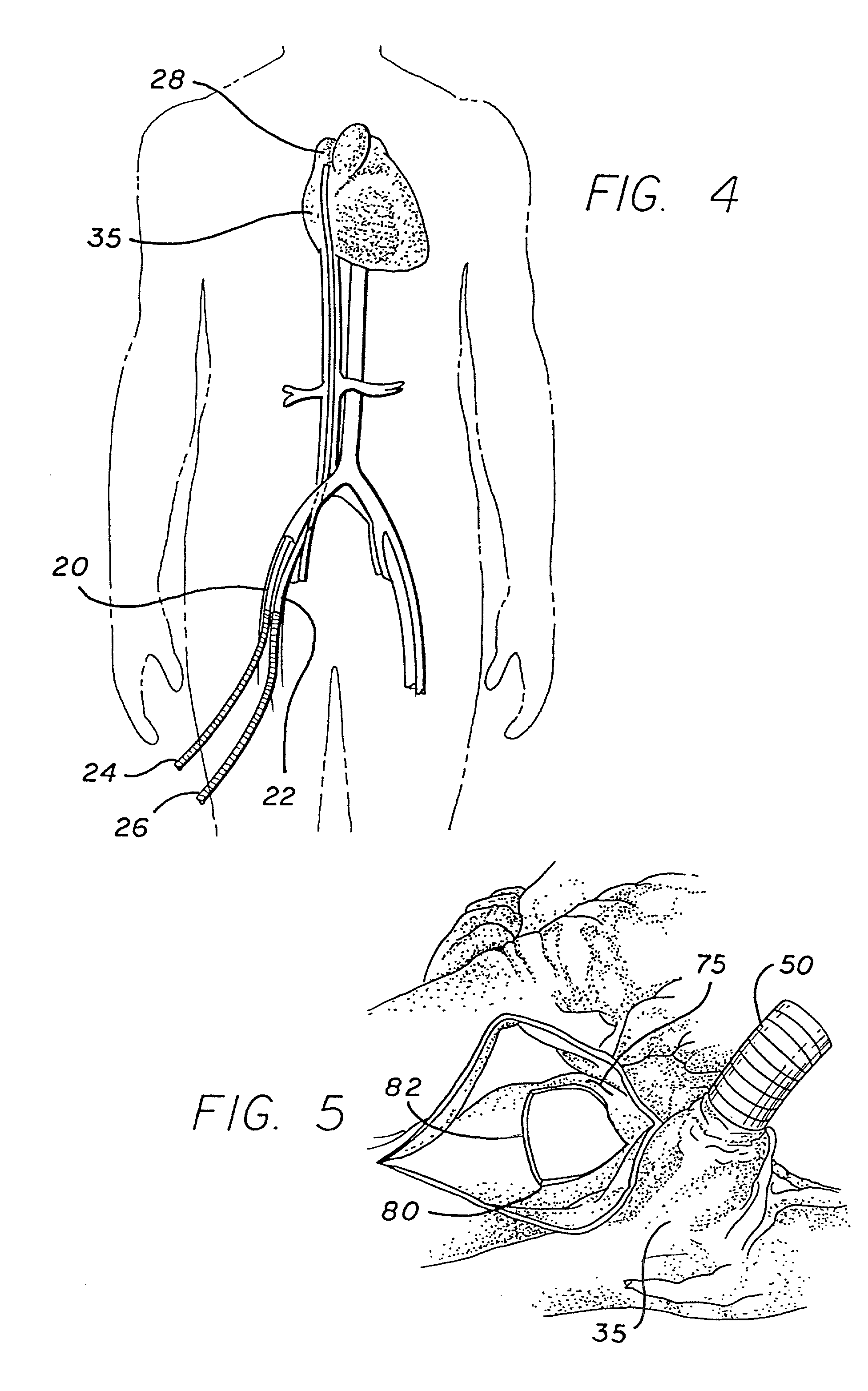Minimally invasive cardiac surgery procedure
a minimally invasive, cardiac surgery technology, applied in the field of surgical procedures, can solve the problems of significant trauma to the patient, particularly traumatic procedures, and long recovery tim
- Summary
- Abstract
- Description
- Claims
- Application Information
AI Technical Summary
Problems solved by technology
Method used
Image
Examples
Embodiment Construction
[0041] Referring now to FIG. 1, in a typical human, a sternum 10, a planary bone structure centrally disposed in the chest, is connected to a plurality of ribs 12 by respective costal cartilages 14.sub.R1, 14.sub.R2, 14.sub.R3, 14.sub.R4, 14.sub.R5, and 14.sub.L1, 14.sub.L2, 14.sub.L3, 14.sub.L4, 14.sub.L5. The heart and great vessels are located within a tissue sack (pericardium), located beneath the sternum, extending laterally under the costal cartilages and ribs, with the aorta disposed in part underlying the second and third right costal cartilages 14.sub.R2 and 14.sub.R3 and a portion of the right coronary artery located generally underlying the vicinity of the fourth and fifth right costal cartilages 14.sub.R4 and 14.sub.R5.
[0042] In accordance with one aspect of the present invention, it has been determined that a surgery on portions of the heart and great vessels located between a point approximately three centimeters above the supra annular ridge and the mid-ventricular ca...
PUM
 Login to View More
Login to View More Abstract
Description
Claims
Application Information
 Login to View More
Login to View More - R&D
- Intellectual Property
- Life Sciences
- Materials
- Tech Scout
- Unparalleled Data Quality
- Higher Quality Content
- 60% Fewer Hallucinations
Browse by: Latest US Patents, China's latest patents, Technical Efficacy Thesaurus, Application Domain, Technology Topic, Popular Technical Reports.
© 2025 PatSnap. All rights reserved.Legal|Privacy policy|Modern Slavery Act Transparency Statement|Sitemap|About US| Contact US: help@patsnap.com



